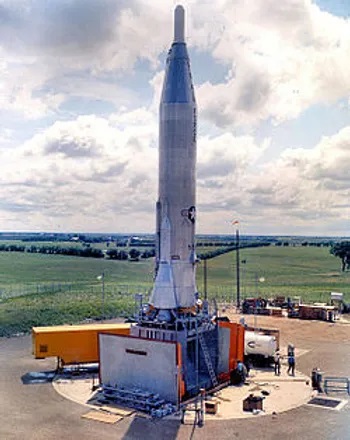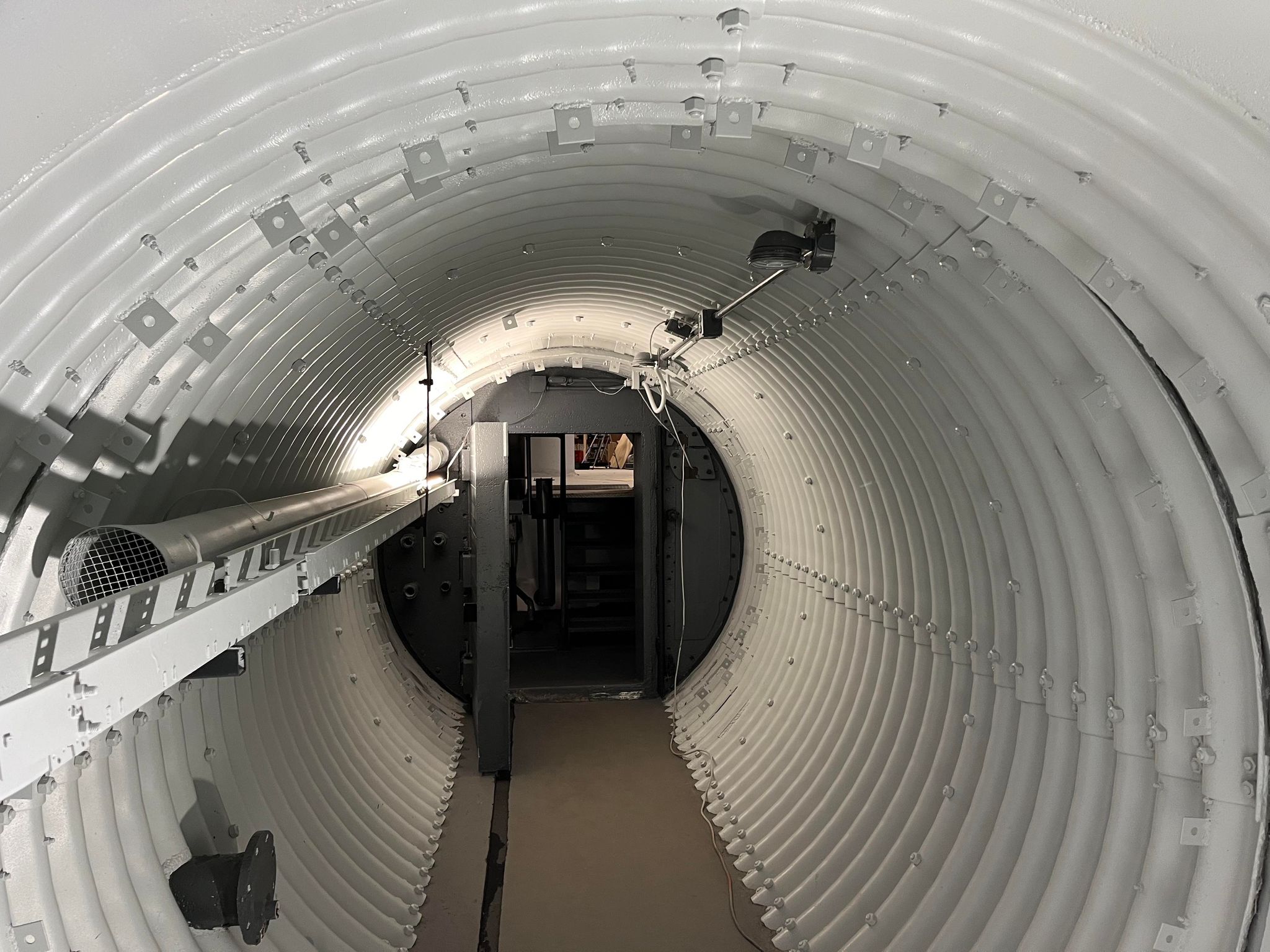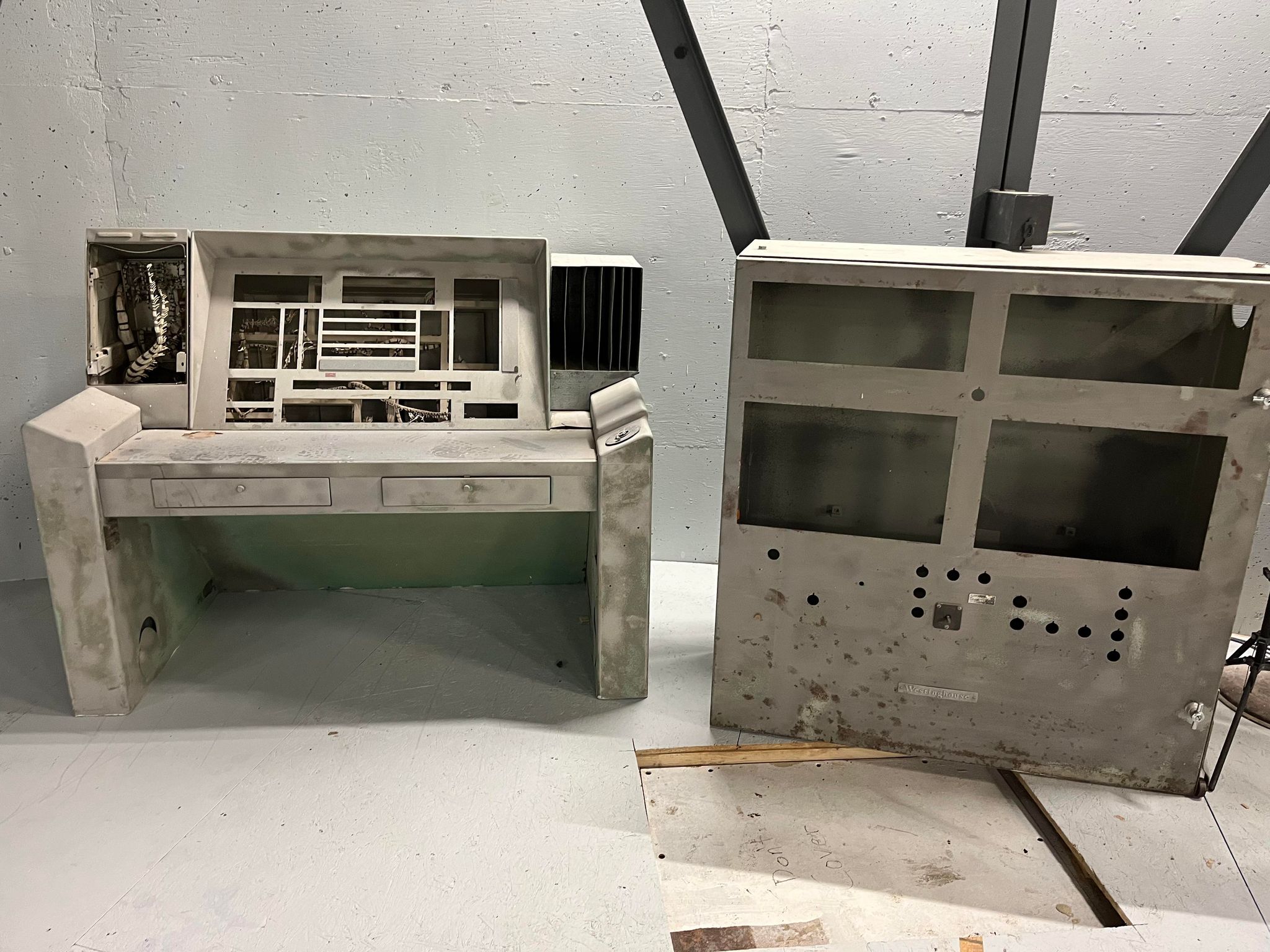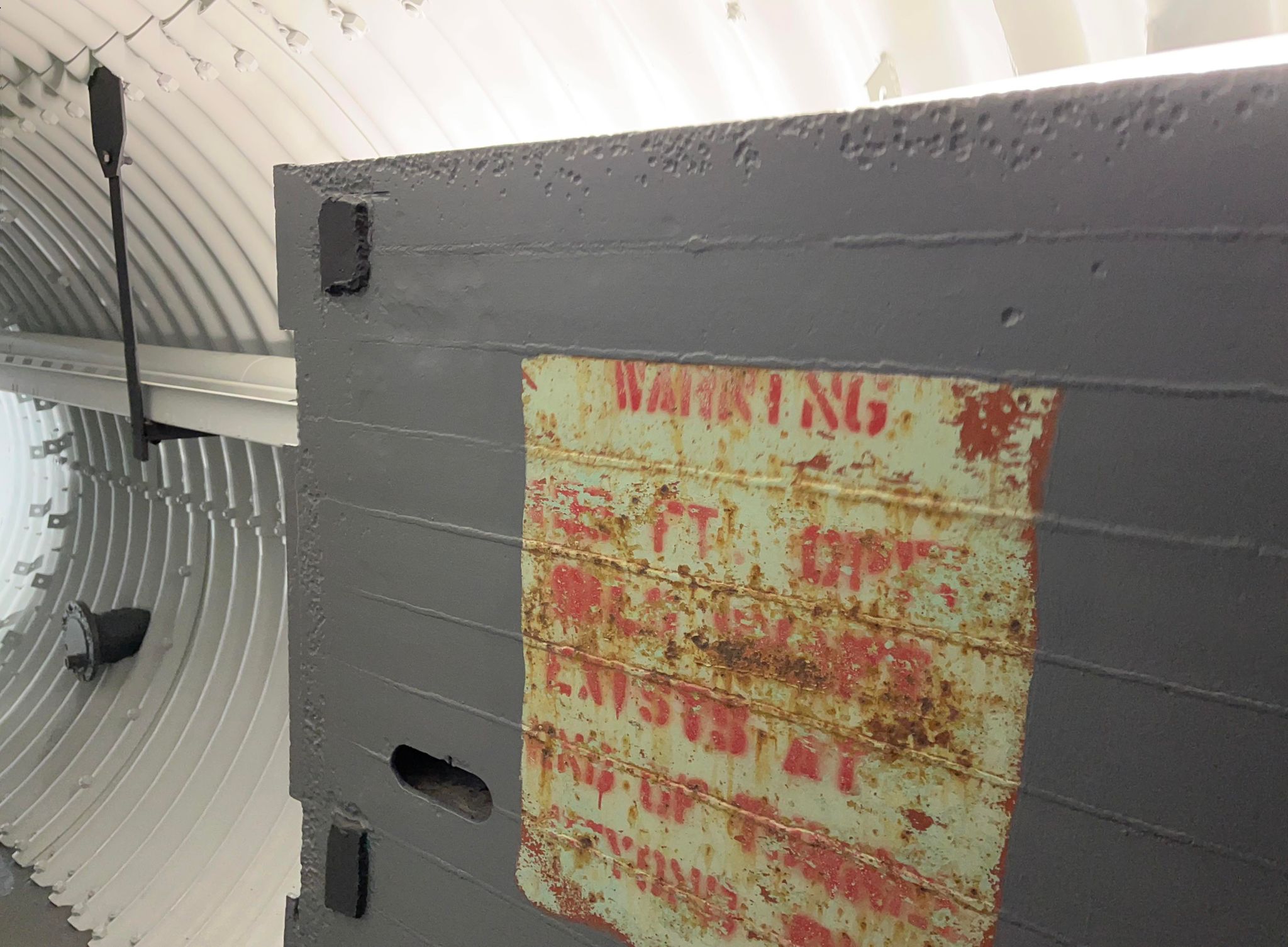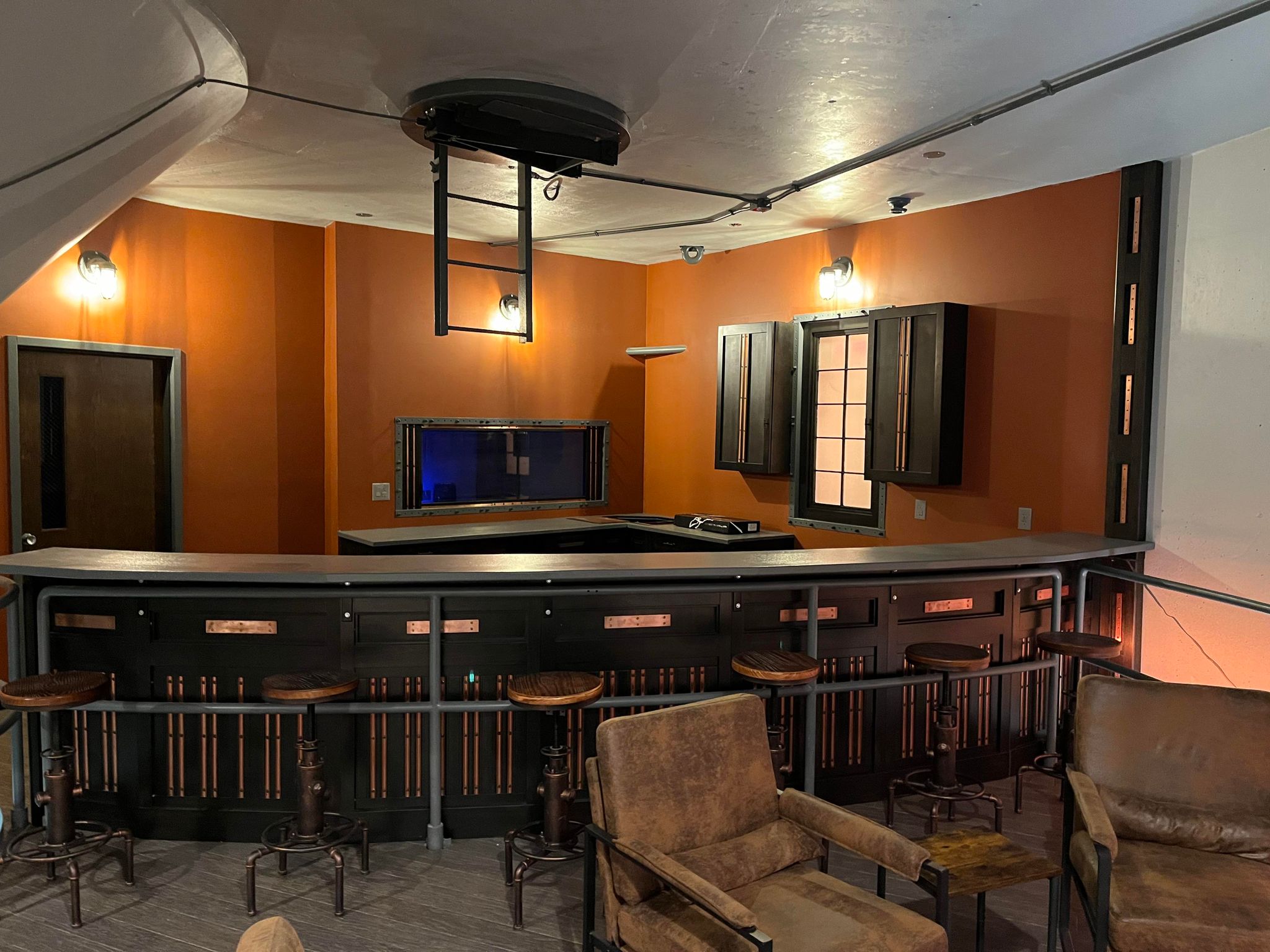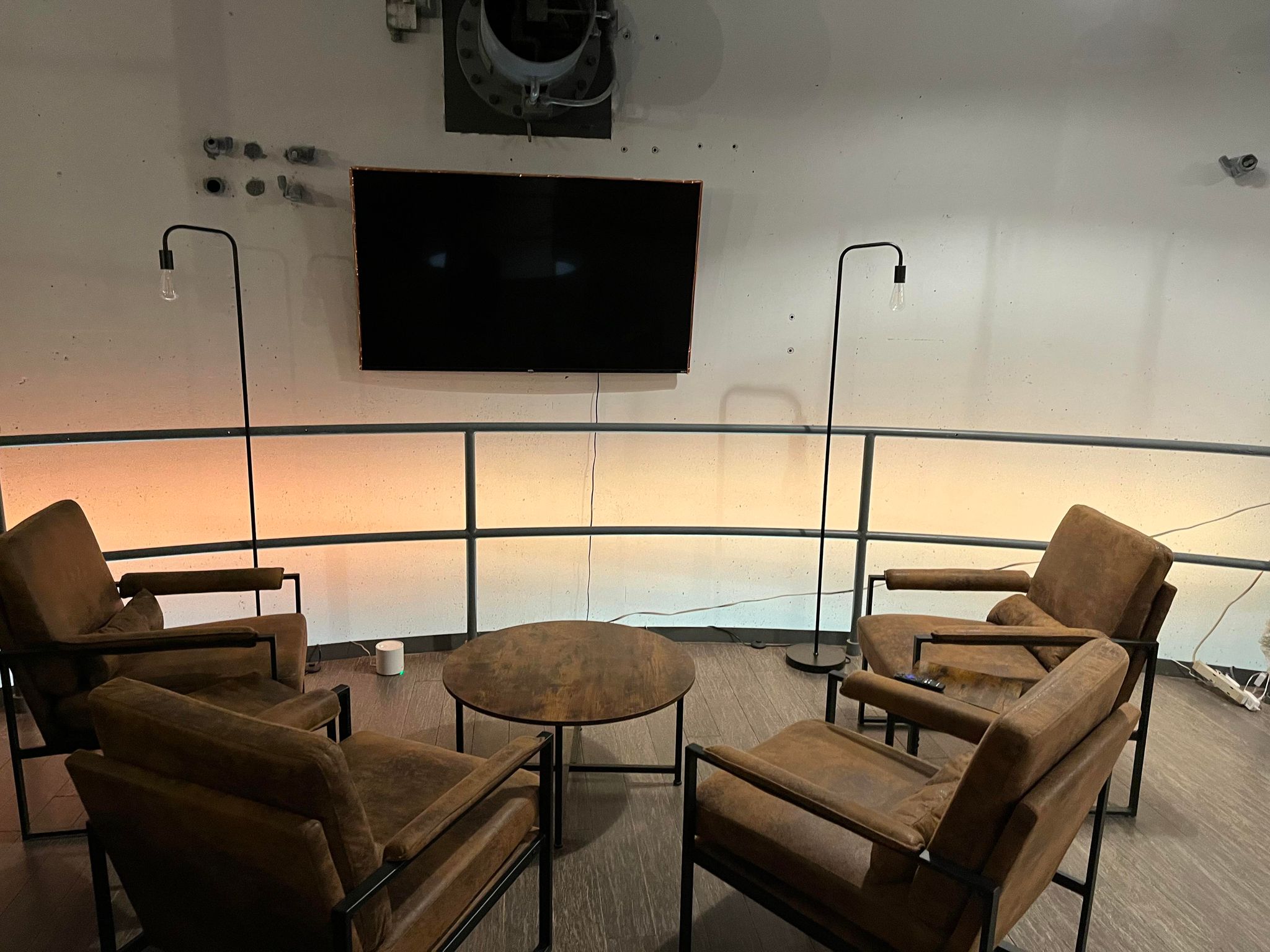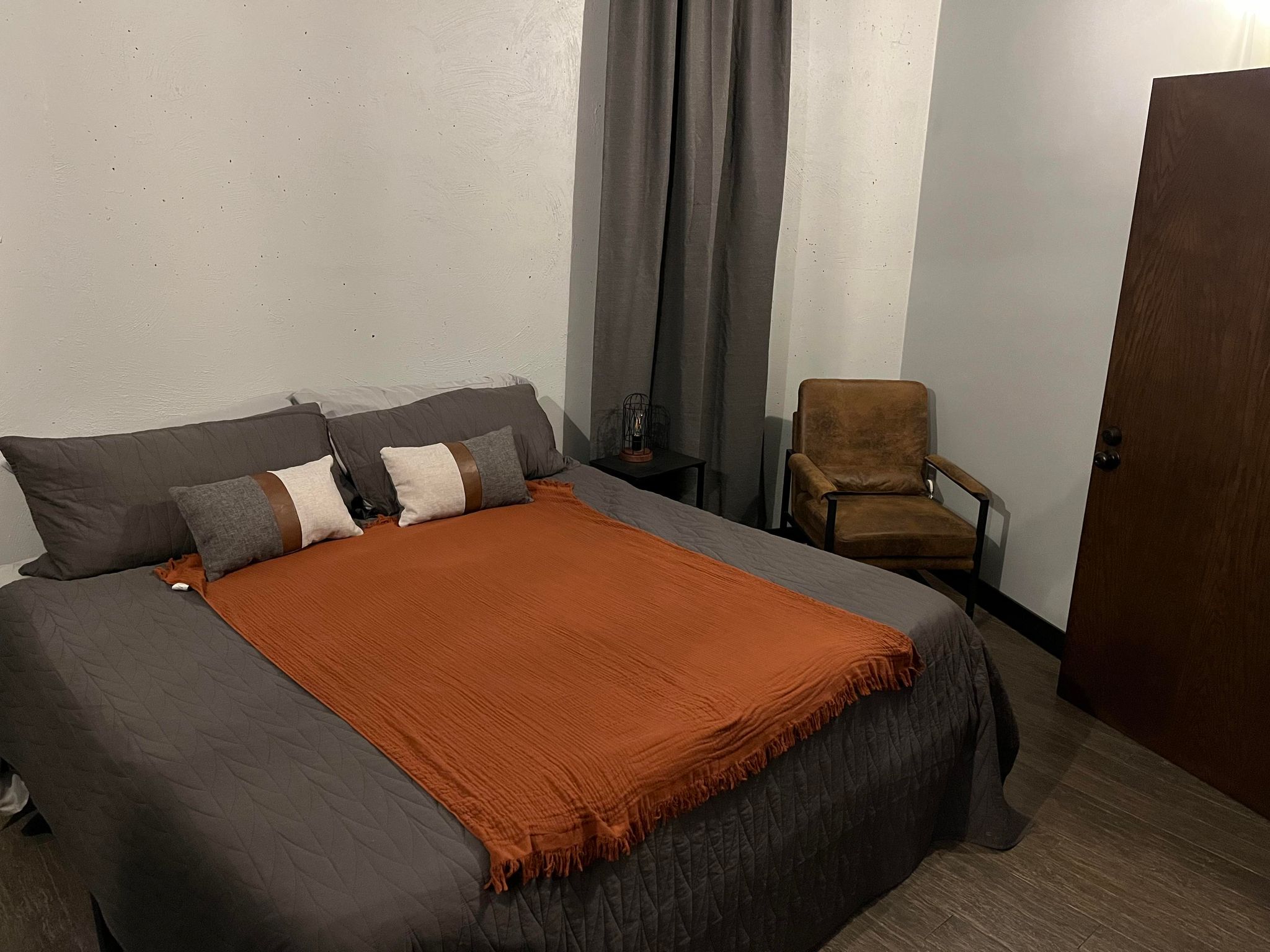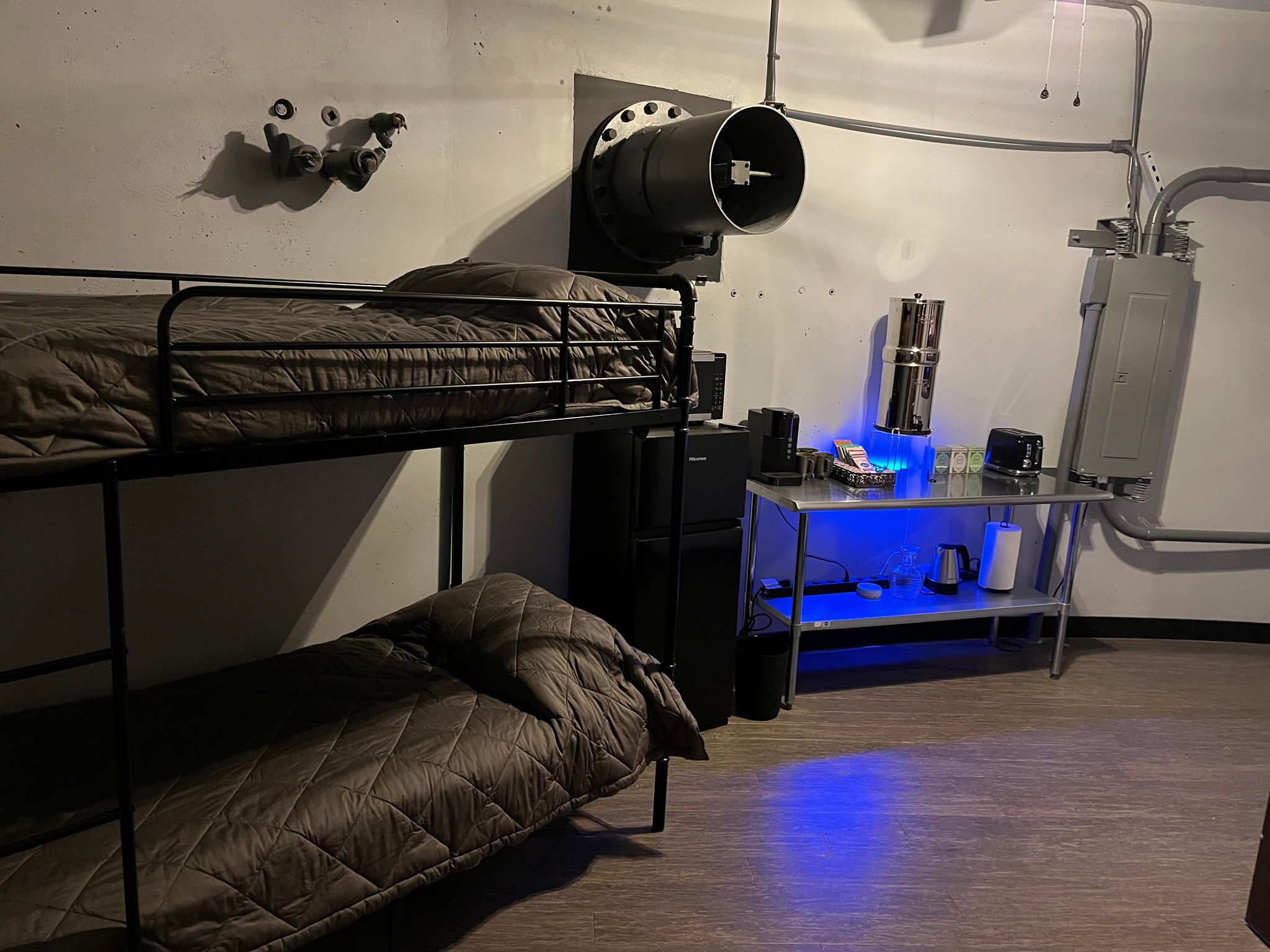Matthew Fulkerson is living his “Ad Astra”, or to the stars dream, on 24 acres of land in Ellsworth County that used to be an Atlas Missile site belonging to Salina’s now shuttered Schilling Air Force Base. He is in the midst of a massive project in renovating the former missile silo, and reached a milestone last week when his first guests spent the night deep underground in the first phase of his project. One floor of the cold war complex, which is sturdy enough to withstand an atomic blast above it, has been converted into an Airbnb.
The property and facilities are located four miles off Interstate 70, in rural Ellsworth County two miles from the town of Wilson. Fulkerson gave KSAL News a tour, and talked about the big plans he has for what he has named the “Atlas Ad Astra Adventure Resort”.
During the late 1950’s, the US Government spent billions of dollars on strengthening military defense against Soviet communism. As a response to Sputnik, the US developed a rocket and nuclear missile defense program. During this period, rockets quickly evolved. As they evolved, these massive and expensive missile installations became obsolete and were quickly abandoned. Over 70 Atlas F Missile Silos were built in the United States, many of which are in the great plains.
The site in Ellsworth County was built in 1959 and was active until 1965, during the Cuban Missile Crisis. Back then, it cost $12.8 million to build the structure alone. In today’s dollars it would be over $120 million.
The missile complex was one of eight connected to Schilling Air Force Base. It was silo number eight, the one located the furthest away from the Salina base. This facility housed the first model ICBM (Intercontinental Ballistic Missile) weapon of mass destruction, and a crew who lived at the site 24 hours a day, 7 days a week, who were at the ready to launch if ordered. It became fully operational by 1961, and by 1965 it became obsolete and the process to decommission it began. The nuclear war head was disposed of in Nevada, while the rocket ended up in Florida. It eventually was used to launch a NOAA weather satellite into space.
For years the decommissioned facility, including the underground living space, office space, missile launch silo, and surrounding property sat vacant. A little over a decade ago, in 2013, Matthew Fulkerson acquired them.
Fulkerson has been slowly working, with help from family and friends at times but mostly alone, to turn the facility into what he envisions as an educational center for space habitat studies, featuring sustainable technologies. It will showcase the technologies and products that will enable us to create resilient and self-sustaining human habitat both on earth, and someday, the moon and other planets.
Fulkerson has been developing the land above and around the bunker into an adventure resort, open for camping, van-life, and RV parking, with hiking trails, campfires, and stargazing.
As part of the project, Fulkerson is turning two floors of the underground bunker facility in the former launch control center, where the missileers once lived, into an Airbnb which will be available for guests to spend the night. One floor is complete, and the first guests who just stayed there left a rave review. It features a bedroom with a king size bed, bunk beds, a kitchen and lounge area, and a bathroom.
Along with constructing the project, Fulkerson has also been working at securing funding. He has been doing some crowd funding, and Airbnb gave him $100,000 for the project. Dave Toland, the Secretary of the Kansas Department of Commerce, toured the facility over spring break and provided some guidance on possible state tourism grant funding sources.
Though still a work in progress, the facility is open to the public, including for tours.
- An original Atlas Missile
- The tunnel between the living area and launch bay.
- The missile launch bay.
- Original control panels which were left in the facility.
- A sign on a blast door.
- Kitchen / bar area of the Airbnb
- Lounge area of the Airbnb
- King size bed
- Bunk Beds
- Bathroom
_ _ _
More information:
Atlas Ad Astra Adventure Resort

